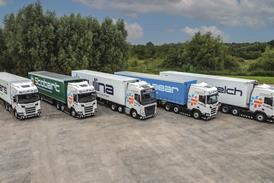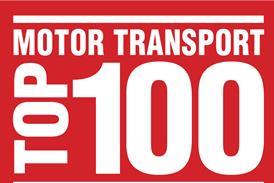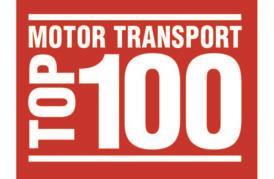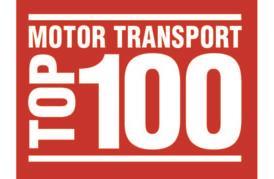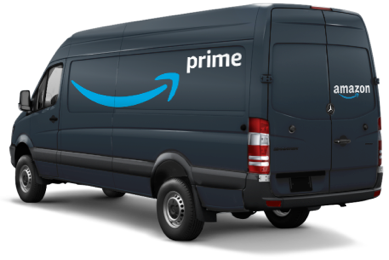
The van parc has grown at around 5% annually, offering users convenience – and an escape from tachograph regulation. But should they be subject to the same enforcement regime as HGVs?
The huge rise in the use of vans up to 3.5 tonnes for parcel deliveries and distribution has taken work traditionally undertaken by HGVs and exploited a lack of regulation in the sector, according to hauliers.
However, trade associations said there wasn’t an appetite in government to start fitting vans with tachographs and the DVSA did not have the resources to enforce millions of extra vehicles.
The issue was brought to light by a Scotland-based transport company, which said it had seen up to 40% of its deliveries wiped out by the ceaseless growth in van driving courier firms:
“There’s been an erosion in our industry; there used to be 14 pallets on our trucks and now there’re 10,” the haulier said. “Four are getting delivered elsewhere – white van man is delivering them.”
The haulier, who asked to remain anonymous, said his company had invested a lot of money in compliance and yet it was losing out to firms that didn’t have to adhere to the same strict set of rules as lorry-operating transport businesses: “We are obviously regulated with tachographs, traffic commissioners and so on and it’s costing our guys a lot of money,” he explained. “I think every van driver should be working to a particular standard. They need to be regulated.
“It’s creating congestion as well.”
The call for tighter regulation has been backed by a driver who worked for a courier firm that delivers parcels on behalf of Amazon.
He told MT that initially the job in Motherwell sounded good and he was told he could start at 9am and finish at 3pm, earning £575 a week.
But when he started finishing his job at midnight each day while struggling to deliver up to 160 parcels, his mind soon changed.
He said: “Each delivery was supposed to take three minutes, but with traffic and new buildings that you couldn’t find for half an hour, you don’t get a break.
“Once I had to go to the toilet; I went into Tesco and then I had a phone call telling me I’d been sitting idle for 30 minutes!
“It was all done through an app on your phone, so they know where your deliveries are.”
He added: “My other half was worried because I was working a lot of hours and coming home and passing out on the floor.”
He left the job after five weeks but he has since take a job on with Amazon’s last-mile delivery, on-demand service Flex. It doesn’t guarantee work every day but it fits in with his current lifestyle.
However, he said: “I definitely believe [van drivers] should be regulated. A lot of people are doing it that don’t have any other options and the conditions they are working in are not good.
“They are out doing 180 drops a day, every day.”
Court action
The GMB union, which said it has taken “Amazon courier companies to court and won large settlements for individuals with these companies because they were bogus self-employed,” said the online retailer was relying on a business model that enabled them to avoid providing vehicles, paying road tax, driver insurance, vehicle maintenance and training costs.
Mick Rix, GMB union national officer, said: “This is a cheap model with no risk and cost to the company.
“Because they are not employed, the company avoids its responsibilities for road traffic accidents and other issues such as adherence to road traffic regulations.
“This creates an uneven playing field and an unfair competitive advantage.”
Surprisingly, when MT put this to Amazon and asked whether it thought more regulation in the sector was needed, a spokesman said: “We support the installation of tachographs in vehicles below 3.5 tonnes as the benefits will have a positive impact on driver and overall customer experience.
“We are committed to ensuring that the people contracted by our independent delivery providers are fairly compensated and are treated with respect, follow all applicable laws and driving regulations and drive safely.
“This is reflected by the positive feedback we receive from drivers every day and allegations to the contrary do not represent the great work done by more than 100 small businesses generating thousands of work opportunities for delivery drivers across the UK.”
Growing haulage
The Amazon spokesman also denied its work deprived hauliers of business, say: “Our requirement for middle-mile transportation capacity is also increasing, providing further opportunities for hauliers,” he added. “We work to set realistic performance expectations that do not place undue pressure on our partners or their drivers.
“We leverage sophisticated technology to plan delivery routes to ensure that drivers aren’t receiving and driving with too many packages.
“Drivers deliver at their own pace and take breaks at their discretion and this is clearly communicated to them.”
Associations unenthusiastic
The industry’s two main trade associations, however, are more circumspect in their support for increased regulation.
Rod McKenzie, the RHA’s director of policy and public affairs, said that the issue was “a work in progress from a policy point of view.”
He added: “It’s really important for us that operators stick to the rules at all times and in all places.
“Part of those rules are employment and terms and conditions. It’s good if our member companies are exemplars of good compliance.
“There are clearly a lot more vans on the roads no question, there’s been a shift towards vans.
“We as a nation expect an appropriate level of compliance for vans as for lorries. It’s something that the RHA is constantly looking at.”
Similarly, the FTA is unenthusiastic. Deputy chief executive James Hookham has in the past described the idea of fitting tachographs in vans as “pointless and time consuming” and questioned whether the resources exist to enforce it.
Denise Beedell, FTA policy manager for vans, told MT: “We would never support companies that try and find loopholes and cut corners; we support best practice at the end of the day.
“We do want to see regulation and properly enforced but we want it to be done in a sensible, realistic way and doesn’t impose standards on the freight and logistics sector that are costly and impossible to comply with.
“We would always recommend that operators didn’t accept excessive hours and have due regard for workers’ hours.
“We don’t advocate that just because you don’t have a tachograph in a vehicle you have a free range and you can crack the whip on your drivers.”
Beedell also said it is not true there is no regulation of van drivers. “There are regulations, but they don’t have some of the technical enforcement regulations, such as tachographs,” she said. “It’s wrong to say it’s not regulated, it’s just regulated in a different way.”
And fitting tachographs into vans wouldn’t resolve a concern raised by the BVRLA: the high rate of first-time MOT failures, with around a quarter of all vans failing their first test.
Toby Poston, BVRLA external relations director, said: “Vans are the fastest growing form of road traffic, but we haven’t seen a corresponding increase in road accident casualties or fatalities.
“In fact, vans continue to have one of the lowest rates of casualties of all transport modes.”
Poston added: “We know that there is little appetite within central government to further legislate in the van sector and the DVSA is not resourced to enforce the millions of vans which operate on UK roads.
“We don’t believe that tachograph installation is the right solution but we would urge fleets to specify safety equipment, particularly autonomous emergency braking technology.
“We are hopeful that increased adoption of this and other electronic safety measures - which the European Union wants to make mandatory from 2022 - will lead to significant improvements in van safety.”
Tachos in vans EU law agreed
Whatever the UK’s opinion is about using tachographs in light commercials, the European Parliament has agreed this must happen in future – albeit only for cross-border operations.
Earlier in December, the Council of the EU, the Parliament and the Council of Ministers agreed “in trilogue” to legislate for vans between 2.4 tonnes and 3.5 tonnes to be fitted with tachographs.
Cristina Tilling, political secretary for road transport at the European Transport Workers’ Federation, said that the deal meant tachos would be mandatory on vans manufactured from 2026, but only if they are engaged in cross-border transport.
The numbers of UK vans affected by this move will be small, although it could have an impact on operators undertaking work between Northern Ireland and the Republic.
As things stand, the UK is due to leave the European Union by 31 January, but there will be a transition period and the government has said all EU law will be transferred into UK law.


